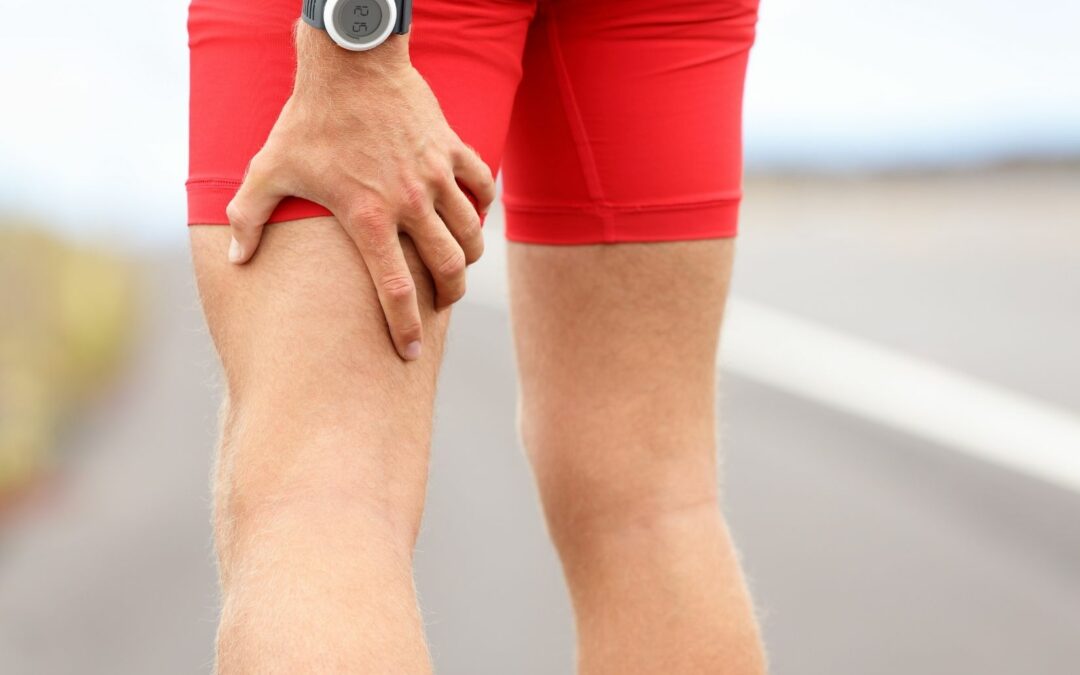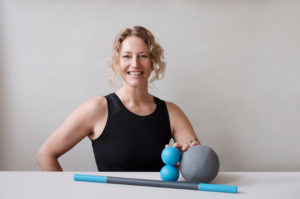Hey there, Cat Matlock here at Free Body. I’m continuing a series right now of talks to help you understand your hamstrings, how they affect the whole body and things that you can do to release your hamstrings. What you learn will truly impact everywhere else in your body in a positive way.
Let’s talk hamstrings. The four long heads of the hamstrings attach below the knee joint and help operate the knee. They bend the knee. They also attach up into the sitting bone and the pelvis and act on the hip joint. So they lift the leg up and back behind you in what’s called extension.
Rolling a ball under your hamstrings while sitting in a chair is really beneficial. This act can help separate the heads of the hamstrings so they’re not sticking to each other, which they often do. Rolling this area can also bring hydration to the tissues. It’s going to help get some fluids in there, unstick the tissues, and get you ready for more specific trigger point work.
Self Trigger Point Release
Self trigger point release is different than self myofascial release. You often use the same tools, but self trigger point release is really specific work. We go to the places where the muscles actually hold their tension and we press on them. You can really make amazing shifts in your body just by pressing on the tender spots and giving them a chance to release. Sometimes it takes a couple seconds for the protective tension around a trigger point to ease up and the ball to sink in. What may feel like not a very big deal in the beginning might become a bigger deal as you sink and soften into that tissue.
You have then a few ways that you can work with those tender points. One way is to just lean in and put more weight into that ball. You can choose to be a little gentle and still have great impact. You could just hold steady and breathe. You could also bring the muscle into stretch and engagement while holding a trigger point until that point starts to feel a little easier.
Quadriceps and Hamstrings
So here’s the thing, quads and hamstrings are directly opposite each other in their actions. The quads straighten the knee and lift the leg up. The hamstrings bend the knee and also lift the leg up and back in extension. So you’ve got these two muscle groups opposing each other. When quadriceps are dysfunctional, they can create all kinds of knee pain, knee issues, weakness in the knee, pain going up or downhill or stairs. Any of those symptoms are quadricep type symptoms. Tension in the front of the thigh or radiating pain down the front of the thigh can also come from quadriceps or iliotibial band pain.
You’re going to have knee pain when you have issues with your quads. If you go see a specialist or massage therapist for your knee pain, they might say, “Oh, okay, well we have to work in your quads.” But here’s the thing. If the hamstrings are in the background with a lot of tension, maybe from Zooming all day or sitting, pelvis tucked under, or curling forward, they’re going to be constantly pulling on the quadriceps. You need to pay attention to the hamstrings, too.
When you’re having a problem in one muscle group, you need to treat the opposite muscle group first. We need to release the hamstrings for the quads to work efficiently and effectively. When the hamstrings are short and tight, they’re pulling on the quads and pulling on all your hip flexors. Yes! If you have issues in your hip flexors, maybe you want to start releasing glute max and hamstrings first, release the muscles that do the opposite!
So here is the main principle to know; if you’re having a problem with one muscle group, think about what’s opposite, and release that first. So, if somebody has aching between their shoulder blades, open up your chest first. One the pecs are released, the pecs, lats, and teres, then that aching between the shoulder blades can go away. It’s the same if you’re having knee problems, quad issues, or hip flexor problems. Start with the opposite muscles, the hamstrings.
I hope this information is helpful for you. I find that people will do the same thing for years and years and not getting better. They simply haven’t been taught how their bodies work. I want to help you understand how your body works, really simple skills and tools. So you can feel amazing in your body with simple things that you can do at home for yourself.





Hi Kat what is zooming?
Thanks for your clear explain of hamstrings and quads.
I trying to release tensions in my body that won’t seem to let . that is. Why i am here.
Hi Cindy. By “zooming”, I mean being on Zoom video calls. With so many online meetings, everyone is sitting more and more. This can really impact the hamstring muscles.
Have you checked out my youtube channel? I have many videos that could support you. https://www.youtube.com/catmatlock